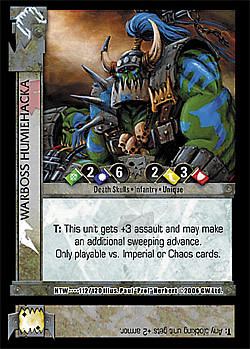Designer(s) Seth Morrigan Players 2 Playing time | Publisher(s) Sabertooth Games Age range 10+ Random chance Some | |
 | ||
Dark Millennium is the successor to the Horus Heresy collectible card game set in the fictional Warhammer 40,000 universe. The base card set was launched in October 2005 by Sabertooth Games.
Contents
Storyline
Events have conspired to draw members of different races and factions into a remote area of space. Each group has its own set of goals, but they all include eradication of any who would stand in opposition. Drawn to the resource-rich regions of the Pyrus sector are:
Gameplay overview
Dark Millennium uses the same basic rules as Horus Heresy.
A game in the Dark Millennium universe pits two commanders and their respective armadas against each other for control of an important planet within the Pyrus sector. One side is declared the attacker, while the other is the defender, but both fight for control of three sectors which are deemed key to winning the planet. The game continues until a player captures two sectors, or four complete turns have elapsed. In the case of neither player dominating the planet after four turns, whoever has won control of a sector (or the more valuable sector if each player has one) wins the game.
Each full turn starts with the deployment phase. In this phase, players deploy one card from their decks face up to each and every unclaimed sector. Players then draw a hand of six cards and alternate deploying cards face down from their hand to any unclaimed sector, one a time. There is no limit to how many cards may be deployed to each sector, but a relative imbalance may lead to an advantage in one sector with a corresponding disadvantage in another sector. Following deployment, the attacking player chooses a sector to contest, and a battle for that sector commences. Once the battle ends, the result may be that one of the two players has claimed the sector, or that neither player has, but once a sector is captured, it is out of play. After the battle selected by the attacker, the defending player chooses a different sector to contest (if any other sector remains unclaimed). Following the conclusion of the two battles, the turn ends and a new turn begins with the deployment phase being repeated.
Factions and decks
Cards in Dark Millennium have one of the following five faction affiliations:
A play deck (made up of units, assets, and ships) must contain at least 60 cards, and may not contain more than four of any one card (except where a specific card notes otherwise). Each player must choose a side or faction when creating a deck, and this restricts the deck to only unaligned cards and cards from that specific faction. A given game may involve two competing decks from any of the factions; there are no additional restrictions on the participants.
Additional factions may be made available in future expansion sets.
Card roles
Each non-sector card in the Dark Millennium game system can serve in three separate and distinct roles. These uses are as follows:
- Normal - Functioning as the actual unit, asset or ship printed on the face of the card. Cards deployed to sectors operate in this standard fashion.
- Die - Used as a pseudo-random number generator, to check the success or failure of some action. When a result needs to be determined, the top card of that player's deck is flipped over (into the discard pile), revealing the die printed on the card.
- Command - Kept in the player's hand during a battle and played as needed for strategic purposes. In this role, the card is turned upside down and only the inverted text at the bottom is used; the remaining portion of the card serves no purpose.
Because of this unique multi-purpose system, every card placed into a deck must be considered for each of its uses. A powerful unit may have a very poor die role, while a mediocre asset with an excellent command line ability may be worth keeping in a deck on the chance that it is drawn into the hand when initiating a battle.
Product compatibility
The cards from the previous Horus Heresy collectible card game (which was also produced by Sabertooth Games) are usable with Dark Millennium, although the Horus Heresy cards only represent two of the factions within Dark Millennium. Players playing Chaos decks or Imperial decks can freely use Traitor and Loyalist cards in their decks, respectively.
Cards from Dark Millennium may not be used in games of Horus Heresy.
Dark Millennium products
Sabertooth Games previously indicated that they intended to release roughly four expansion sets for Dark Millennium per year, in an effort to keep the game universe fresh. While this schedule was met in 2006, the product was scheduled for retirement in 2007, with the final expansion set released in April of that year.
Starter decks from the base set are available for each of the four main factions, with the majority of the remaining sets available only as boosters. The following card sets and products have been released or announced:
